Rude visitors, sinking pianos and dismayed presidential residents

ILLUSTRATION: THOMAS FUCHS
This year marks the bicentennial of the public reopening of the White House after the War of 1812, when the British burned the executive mansion and sent President James Madison fleeing. Though the grand house has legions of devotees today, its occupants haven’t always loved the place.
The problems began in the 1790s, as the Founding Fathers struggled with the question of how grand such a residence should be for an elected president in a popular government. Was the building to be a government office with sleeping arrangements, a private home, the people’s palace or all of the above? Frequent name changes reflected the confusion: President’s Palace, President’s House and Executive Mansion. The president made its official name the White House only in 1901.
The hour, date and kind of celebration have changed century to century
With its loud TV hosts, drunken parties and awful singing, New Year’s Eve might seem to have been around forever. Yet when it comes to the timing and treatment of the holiday, our version of New Year’s—the eve and day itself—is a relatively recent tradition.
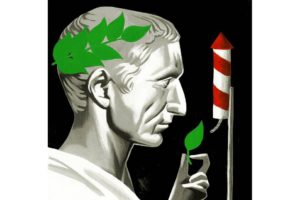
ILLUSTRATION: THOMAS FUCHS
The Babylonians celebrated New Year’s in March, when the vernal equinox—a day of equal light and darkness—takes place. To them, New Year’s was a time of pious reckoning rather than raucous partying. The Egyptians got the big parties going: Their celebration fell in line with the annual flooding of the Nile River. It was a chance to get roaring drunk for a few weeks rather just for a few hours. The holiday’s timing, though, was the opposite of ours, in July.
The plant’s odyssey from a Greek festival to a role in the works of Dickens and Trollope
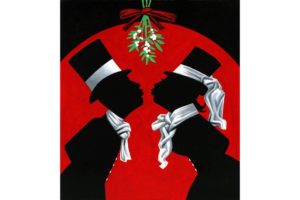
ILLUSTRATION: THOMAS FUCHS
Is mistletoe naughty or nice? The No. 1 hit single for Christmas 1952 was young Jimmy Boyd warbling how he caught “mommy kissing Santa Claus underneath the mistletoe last night.” It may very well have been daddy in costume—but, if not, that would make mistletoe very naughty indeed. For this plant, that would be par for the course.
Mistletoe, in its various species, is found all over the world and has played a part in fertility rituals for thousands of years. The plant’s ability to live off other trees—it’s a parasite—and remain evergreen even in the dead of winter awed the earliest agricultural societies. Mistletoe became a go-to plant for sacred rites and poetic inspiration.
Kissing under the mistletoe may have begun with the Greeks’ Kronia agricultural festival. Its Roman successor, the Saturnalia, combined licentious behavior with mistletoe. The naturalist Pliny the Elder, who died in A.D. 79, noticed to his surprise that mistletoe was just as sacred, if not more, to the Druids of Gaul. Its growth on certain oak trees, which the Druids believed to possess magical powers, spurred them to use mistletoe in ritual sacrifices and medicinal potions to cure ailments such as infertility.
Mistletoe’s mystical properties also earned it a starring role in the 13th-century Old Norse collection of mythical tales known as the Prose Edda. Here mistletoe becomes a deadly weapon in the form of an arrow that kills the sun-god Baldur. His mother Frigga, the goddess of love and marriage, weeps tears that turn into white mistletoe berries. In some versions, this brings Baldur back to life, carrying faint echoes of the reincarnation myths of ancient Mesopotamia. Either way, Frigga declares mistletoe to be the symbol of peace and love.
Beliefs about mistletoe’s powers managed to survive the Catholic Church’s official disapproval for all things pagan. People used the plant as a totem to scare away trolls, thwart witchcraft, prevent fires and bring about reconciliations. But such superstitions fizzled out in the wake of the Enlightenment.
The pedigree of sequels is as old as storytelling itself

ILLUSTRATION: RUTH GWILY
“Star Wars: The Last Jedi” may end up being the most successful movie sequel in the biggest sequel-driven franchise in the history of entertainment. That’s saying something, given Hollywood’s obsession with sequels, prequels, reboots and remakes. Although this year’s “Guardians of the Galaxy 2” was arguably better than the first, plenty of people—from critics to stand-up comedians—have wondered why in the world we needed a 29th “Godzilla,” an 11th “Pink Panther” or “The Godfather Part III.”
But sequels aren’t simply about chasing the money. They have a distinguished pedigree, as old as storytelling itself. Homer gets credit for popularizing the trend in the eighth century B.C., when he followed up “The Iliad” with “The Odyssey,” in which one of the relatively minor characters in the original story triumphs over sexy immortals, scary monsters and evil suitors of his faithful wife. Presumably with an eye to drawing in fans of the “Iliad,” Homer was sure to throw in a flashback about the Trojan horse. Continue reading…
Raising girls has never been simple, says the historian Amanda Foreman. But now, more than ever, they need strong maternal support
An odyssey from colonial staple to political emblem to holiday standby
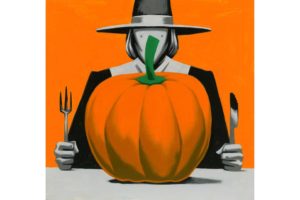
ILLUSTRATION: THOMAS FUCHS
Pumpkin pie may not compete with its apple-filled rival for most of the year, but on Thanksgiving, it’s the iconic dessert, despite often resembling a giant helping of baby food. As a slice of Americana, the pie has a history as complicated as the country itself.
The pumpkin’s ancestors were ancient gourds that left Asia some 60 million years ago. Known botanically as Cucurbitaceae, the plant family slowly spread to the African, Australian and American continents, laying down roots (and vines) to become such familiar garden goodies as the melon, the cucumber and the squash.
Opponents have ranged from John Adams to Richard Nixon. Why has the system survived?
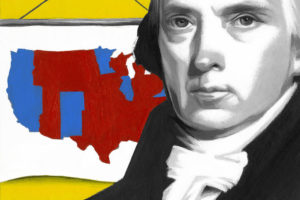
PHOTO: THOMAS FUCHS
The 2016 election results caused plenty of bitterness—not the least of which had to do with the Electoral College. Donald Trump won the presidency a year ago this week but lost the popular vote—something that has happened a handful of times in the republic’s history and twice in the past two decades. In a December press conference, President Barack Obama declared the system to be past its sell-by date: “It’s a carry-over from an earlier vision of how our federal government was going to work.”
What were the Founding Fathers thinking? At the 1787 Constitutional Convention, they created a unique system for choosing the president. Each state got a number of electors based on the total of its U.S. senators (two) and U.S. representatives (as set by census). Each state legislature could decide the method of picking electors, but if the electors’ vote was inconclusive, the choice would be sent to the House of Representatives. “The original idea,” wrote Federal Election Commission official William C. Kimberling in 1992, “was for the most knowledgeable and informed individuals from each State to select the president based solely on merit and without regard to State of origin or political party.” Continue reading…
As the Reformation passes a milestone, a look at a key weapon of change

ILLUSTRATION: THOMAS FUCHS
The Reformation began on Oct. 31, 1517, when Martin Luther, as legend has it, nailed his “95 Theses” to a church door in Wittenberg, Germany. Whatever he actually did—he may have just attached the papers to the door or delivered them to clerical authorities—Luther was protesting Catholics’ sale of “indulgences” to give sinners at least partial absolution. The protest immediately went viral, to use a modern term, thanks to the new “social media” of the day—the printed pamphlet.
The development of the printing press around 1440 had set the stage: In the famous words of the German historian Bernd Moeller, “Without printing, no Reformation.” But the pamphlet deserves particular recognition. Unlike books, pamphlets were perfect for the mass market: easy to print and therefore cheap to buy. Continue reading…
From angry gladiators to Suffragette sabotage
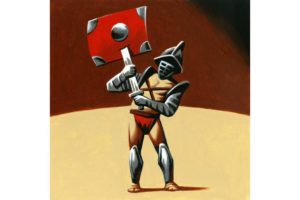
ILLUSTRATION: THOMAS FUCHS
Sports and protest often go together: As soon as someone makes a call, somebody else is disputing it. But in recent weeks, the really big clashes have happened off the playing fields, as President Donald Trump and others criticized football players kneeling during the national anthem. Such mixing of sports, politics and protest has ancient roots—on the part of both spectators and players.
An early protest by a player comes down to us in “Lives of the Twelve Caesars” by the Roman historian Suetonius (69-130 A.D.). An unnamed gladiator once refused to fight in front of the Emperor Caligula. Then, the gladiator, seeing he would die anyway, grabbed his trident and killed his would-be victors.






